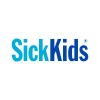
Follow-up Study After ACLSCT for Restoration of Corneal Epithelium in Patients With LSCD Due to...
Limbal Stem Cell Deficiency Due to Ocular BurnThis is a multinational, multicentre, prospective, non-pharmacological follow-up study of the clinical trial HOLOCORE. All patients transplanted with Holoclar in the HOLOCORE clinical trial who consent to participate will be enrolled in this prospective study and observed for at least 12 months.

Local Assessment of Management of Burn Patients
Burns - MultipleMechanical VentilationIn the general intensive care unit (ICU) population, there is strong evidence for benefit from lung-protective mechanical ventilation, including the use of low tidal volumes and adequate levels of positive end-expiratory pressure (PEEP). In burn patients it is highly uncertain whether these settings are beneficial and there are even concerns over safety of, in particular use of low tidal volumes. There is lack of international guidelines and consequently ventilation practice in burn patients may widely vary. The primary objective is to determine ventilation practice in burn ICUs worldwide, focusing on the size of tidal volumes and the levels of PEEP used for burn patients. In addition, data on other strategies considered important in patients who receive ventilation are also collected, including data on neuromuscular blocking agents, sedatives and analgesics, and type and amount of intravenous fluids used in the period of ventilation. The secondary objective is to determine the association between tidal volume size and levels of PEEP, and duration of ventilation in burn patients.

Level of Burn Out of Surgical Residents Working in All Hospitals of Lahore
Burn Out SyndromeThe term burnout was coined by psychologist Herbert Freudenberger in 1974 in an article entitled "Staff Burnout" in which he discussed job dissatisfaction precipitated by work-related stress. A broadly applicable description defines burnout as a state of mental and physical exhaustion related to work or care giving activities. A long-standing conceptual and operational definition characterized burnout as a triad of emotional exhaustion (emotional over extension and exhaustion), depersonalization (negative, callous, and detached responses to others), and reduced personal accomplishment (feelings of competence and achievement in one's work) In the World Health Organization International Classification of Diseases, 10th revision, burnout is defined as a "state of vital exhaustion." Although no specific diagnosis of burnout is mentioned in the Diagnostic and Statistical Manual of Mental Disorders, burnout is a clear syndrome with significant consequences. Burnout in health care professionals has gained significant attention over the last several years. Given the intense emotional demands of the work environment, clinicians are particularly susceptible to developing burnout above and beyond usual workplace stress. Residency training, in particular, can cause a significant degree of burnout, leading to interference with individuals' ability to establish rapport, sort through diagnostic dilemmas, and work though complex treatment decision making. Overall, burnout is associated with a variety of negative consequences including depression, risk of medical errors, and negative effects on patient safety. The goal of this review is to provide medical educators and leaders with an overview of the existing factors that contribute to burnout, the impact of burnout, inter specialty variation, and suggestions for interventions to decrease burnout.

A Study of MIcrocirculatory Perfusion Alterations in Severe Burn Injury
MicrocirculationBurns1 moreThe main objective of our study is to focus on the efficiency of standard fluid resuscitation in promoting tissue perfusion in severe burns patients (>15% TBSA). The incidence of microcirculatory perfusion alterations, according to a predefined arbitrary cut off value, in patients with severe burns injury (>15%TBSA) will be assessed during standard resuscitation in the first 24 hours. Secondary objectives are to assess differences in microcirculatory perfusion alterations between early (<12 hours post burn injury) and late standard resuscitation (>12 hours post burn injury) with addition of albumin to the regime. And to measure several biomarkers of glycocalyx shedding, oxidative stress and inflammation.

Dexmedetomidine for Morphine Consumption Reduction (DEXDOR)
BurningThe new progresses relative to sedation-analgesia for resuscitation unit lead to perform a light and cooperative sedation as soon as possible in order to decrease the period of mechanical ventilation. Dexmedetomidine (DEX), which is a central alpha-2 agonist, is the referential hypnotic in this case with a reduction of the morphine-type use. DEX was mainly studied in the bandage procedures for the burned adult. The aim of this study is to evaluate the reducing effect of DEX on the morphine use in case of severe burnings for adults, to describe the receivers of DEX and to report the procedure of this new molecule.

Efficiency and Efficacy of the Distress Thermometer in the Burn and Wound Population (Research Mentoring...
BurnsThe purpose of the study is to test the efficiency and efficacy of the Distress Thermometer of patients admitted to the tertiary Burn and Wound Center. The American Cancer Society and the National Comprehensive Cancer Network published treatment guidelines in 2005 adopting the use of the Distress Thermometer as the preferred adjunct assessment tool of a patient's emotional well-being. A literature search provided extension of the tool to a Cardiac Follow-up Clinic. The Distress Thermometer is currently used with oncology patients at Saint Elizabeth. The emotional well being of patients and their significant others is a hallmark of wholistic care. The simple Likert scale of 0-10 has a trigger for further assessment and/ or intervention at four. The validity testing of the tool was done against the Hospital Anxiety and Depression Scale (HADS) and the Brief Symptom Inventory (BSI-18). The purpose of this study is to measure the efficiency and efficacy of the documentation of the Distress Thermometer to patients admitted to a tertiary Burn and Wound Care Center. The frequency of the documentation will be counted and type of documentation will be categorized.

Effect of Burn Size on Cytomegalovirus Reactivation and Correlates of T Cell Immune Function in...
BurnsCytomegalovirusThe purpose of this study is to evaluate the effect of burn injury on the human immune system with a focus on cytomegalovirus (CMV) reactivation and the immunologic correlates of latent viral reactivation. Subjects will be patients admitted to the North Carolina Jaycee Burn Center with burn injury. Blood samples will be collected over time and will be evaluated for CMV reactivation and immune cell phenotype.

Laser Therapy for Pediatric Burn Scars
CicatrixHypertrophic1 moreA new era of outcomes for pediatric burn patients has begun as burn care continues to improve. Unfortunately, complete restoration of burn-injured skin may be limited by the development of hypertrophic scarring. Treatment with laser therapy is one of the newest forms of scar therapy available. Although laser therapy has only been adopted by burn clinicians within the last several years, early evidence suggests that it may offer significant benefits. Thus the aim of this study is to investigate the effectiveness of using laser therapy to treat hypertrophic burn scars in pediatric patients by using a comprehensive set of subjective and objective scar assessment tools.

Colloid Improves Organs Function in Resuscitation of Extensive Burn Patients
BurnThe present study was to evaluate the effectiveness of colloid compared with crystalloids for fluid resuscitation in critical burn patients with total burn surface area ≥50%.

Identification and Validation of Biomarkers for Infections in Burns
Burns Involving 20% or More of Body SurfaceIn this prospective, multi-center study, 200 patients from four participating Texas burn hospitals will be enrolled from admission to discharge. The clinical research study team will collect approximately 11 serum samples and clinical data related to sepsis and infection predictors from severely burned adult patients, ages 18-80 years old. All serum samples from participating sites will be shipped to the lead site, University of Texas Medical Branch. The University of Texas Medical Branch will then validate previously identified biomarkers while simultaneously identifying novel biomarkers through discovery proteomics.
